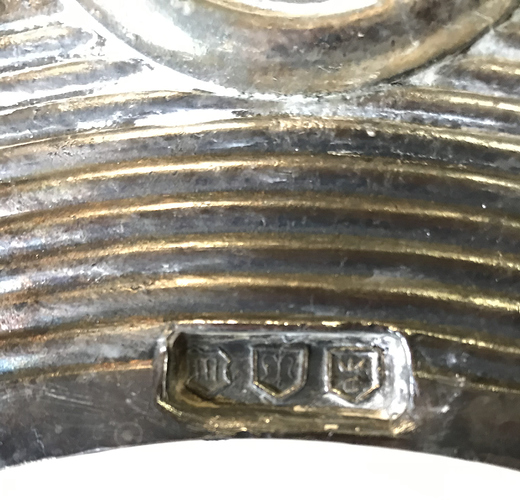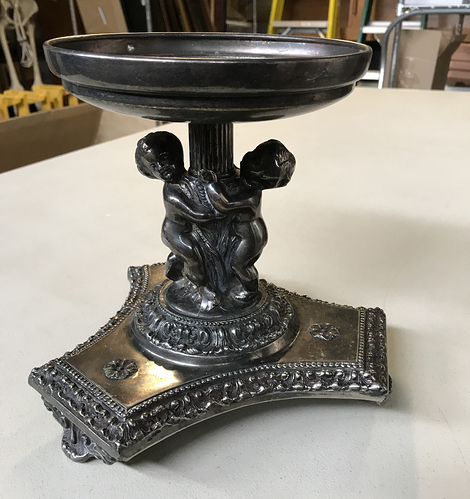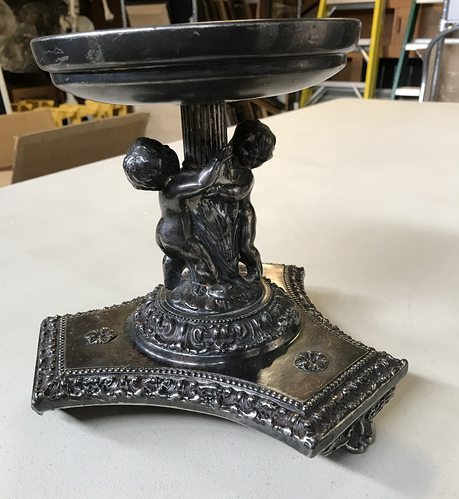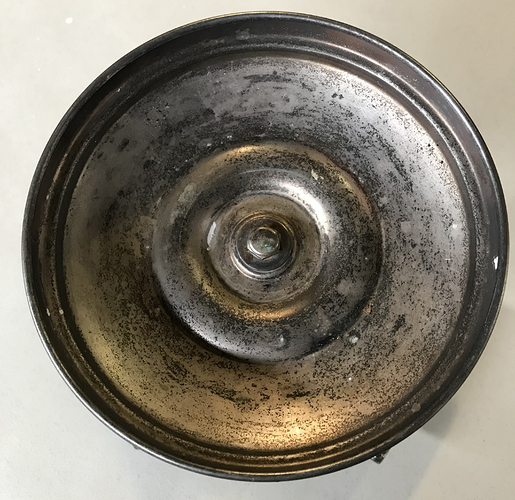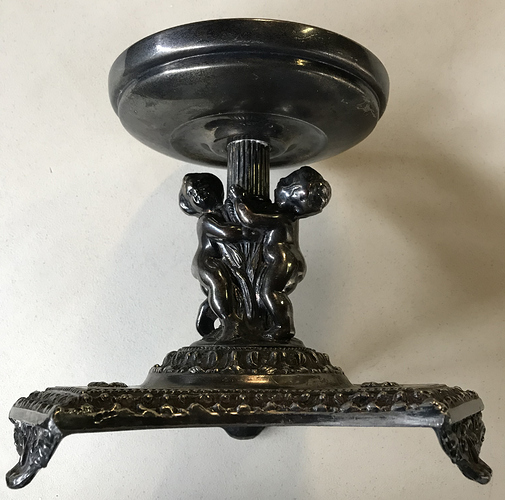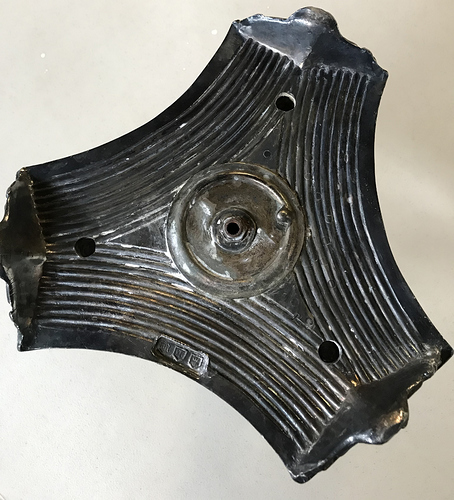Hello All! I’ve been a viewer here and enjoyed the posts, now I have a question of my own, so decided to join! I have a box of miscellaneous silver/silverplate inherited from my grandmother. It really is a motley collection, random pieces missing the rest of their sets- probably all plated and not worth much, but before I donate it, I have to ask about one very heavy piece. It’s nearly 10 lbs and I wouldn’t want to risk giving it away if it’s solid silver or worth something.
There are no words or marks on the piece other than a three-shield hallmark I haven’t been able to identify from any site. It’s pressed into the bottom, an ornate shield with an ‘M’, followed by two simple shields- the middle containing a ‘tree’ glyph or inverse-psi, and last a ‘C’ with a crown above it. Look familiar to anyone?
The piece itself is a stand of some sort, rounded top and decorated base, in between is a fluted post flanked by two cherubs. The bottom is obviously cast, and the 3 pieces are held together with a rod or bolt with nuts on the bottom.
It’s a strange piece, if anyone has any questions, thoughts, or suggestions on where/how to further my research, it would be appreciated!
I seem to remember that this mark has been queried before on another forum (but I can’t find the query). I’m pretty sure it was on electroplate and if your piece does not say “sterling” anywhere then it too is almost certainly electroplate. In any case I don’t think that anybody was able to identify the manufacturer, except that it was from the USA.
Phil
Thank you Phil.
Yes, there are no words anywhere on the piece that I can find. Other than what you’ve mentioned above, how can I tell if this is solid, plated, or electroplated?
Thanks!
If it is plated or electroplated (these terms are interchangeable for most “silver”) there may be areas where the plating has worn off. Look particularly at high spots and corners. Remember that the base metal is likely to be silver-coloured but it should be possible to see a difference. Acid testing for the presence of silver involves taking a sample from deep enough to avoid any possible plating so should be done in a non-conspicuous place. The best way of determining the composition is by electronic testing but the machines are expensive and you would need to find somebody to do it for you.
Probably your first course of action would be to find an expert, possibly an antique dealer or auction house who would be able to give guidance. However, due to the absence of any fineness marking I think that the chances of it being anything other than electroplate are extremely small.
